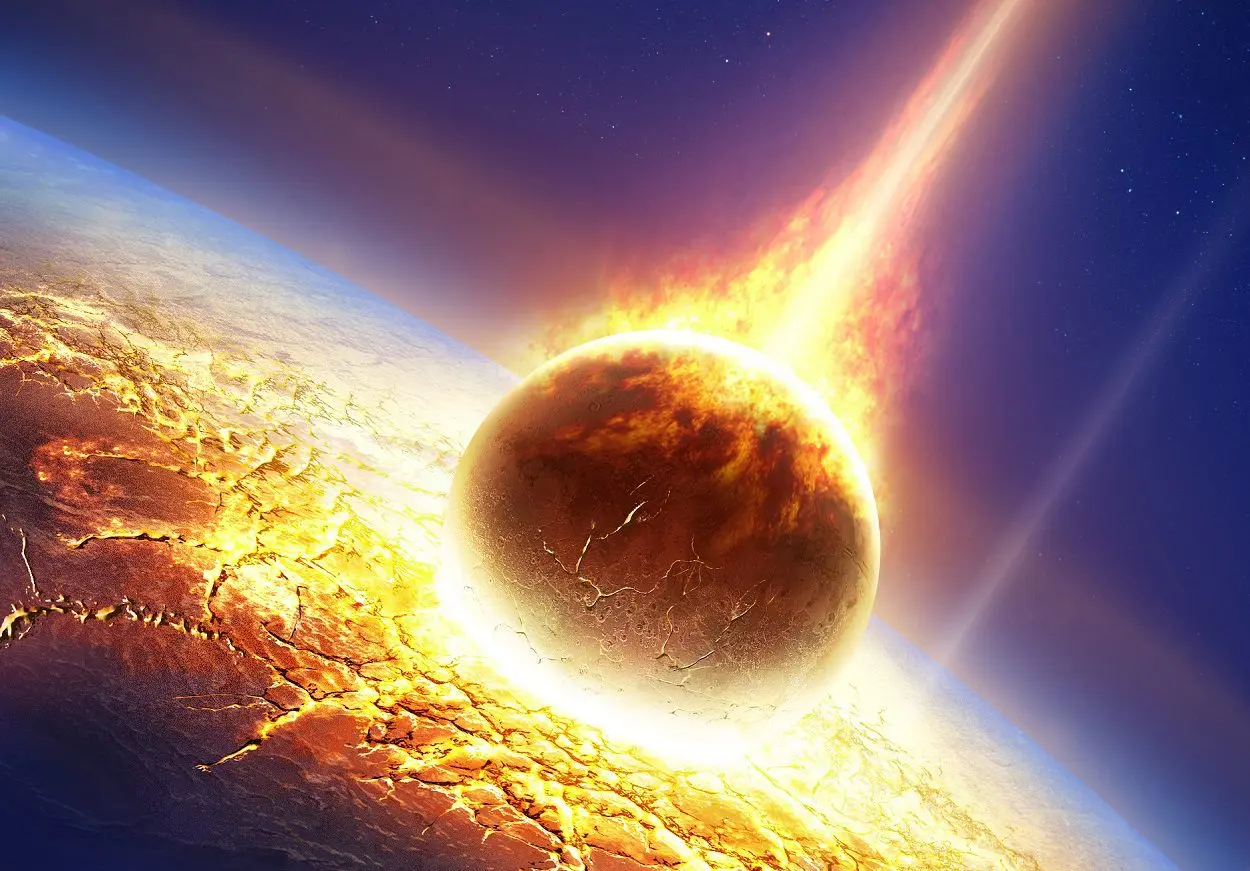In a study of the Earth’s mantle, scientists have identified two compositionally distinct continent-sized anomalies which could be traces of a protoplanet which impacted with Earth during its early formation.
This protoplanet is commonly known as Theia, a moniker inspired by the Greek mythological Titan who happened to be the mother of Selene, the deity connected with the Moon. In accordance with modern theories of planetary genesis, Theia was one of several Mars-sized objects present in the Solar System about 4.5 billion years ago.
According to the giant-impact hypothesis (also known as the Theia Impact), Theia crashed into the Earth when the solar system was still young. The ensuing collision led to the fragmentation and extensive intermingling of both parent objects, leading to a significant fragment breaking off to give rise to the formation of the Moon.
In a study published in the journal Nature, seismic images of Earth’s interior have revealed two continent-sized anomalies with low seismic velocities, known as the large low-velocity provinces (LLVPs), located in the lowermost mantle.
According to the researchers, these anomalies could be traces of the Theia mantle material (TMM) which is 2.0–3.5% denser than the Earth’s solid lower mantle. The TMM sank to the bottom portion of Earth’s mantle forming blobs 2,900 kilometers (1,800 miles) below the Earth’s surface.
In addition to birthing the moon, the study suggests that this collision, and the remnants it left in its wake, might have played a role in shaping the Earth into a life-sustaining planet.
According to the study authors: “New computer modelling supports a dramatic origin story for these strange blobs: they are artefacts of a gargantuan collision 4.5 billion years ago between early Earth and another young planet. The modelling suggests that this violent encounter caused material from the impacting world, called Theia, to embed itself in the lower half of Earth’s mantle. The collision also caused some of Theia’s remnants to be flung into orbit; these eventually coalesced into the Moon.”
https://doi.org/10.1038/s41586-023-06589-1
Header Image Credit : iStock







